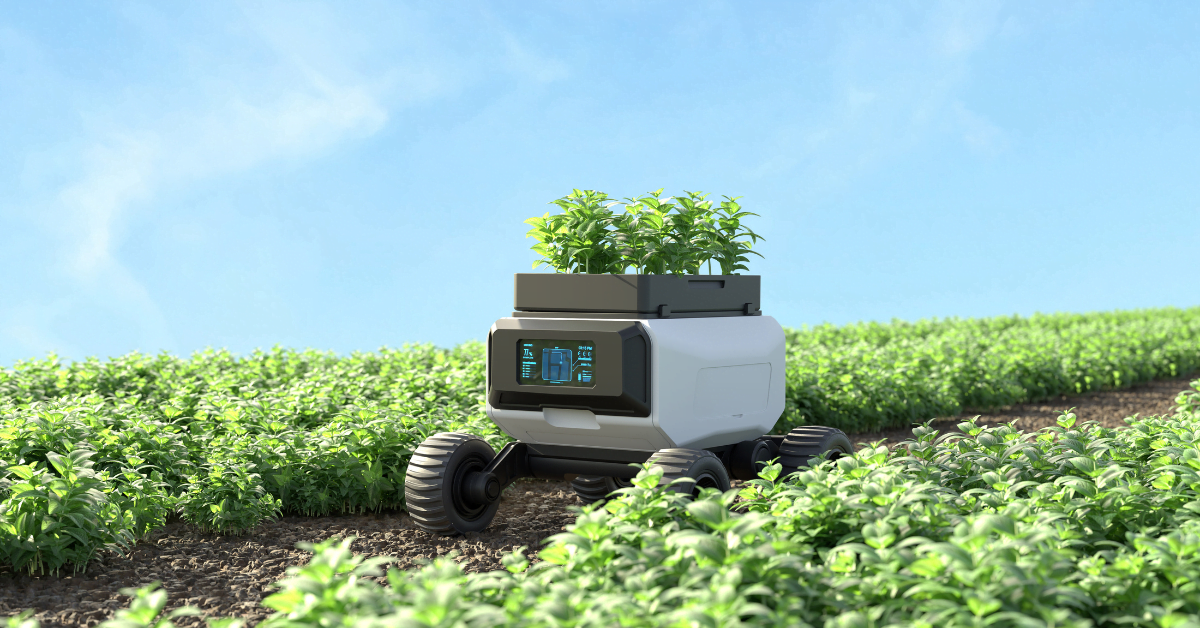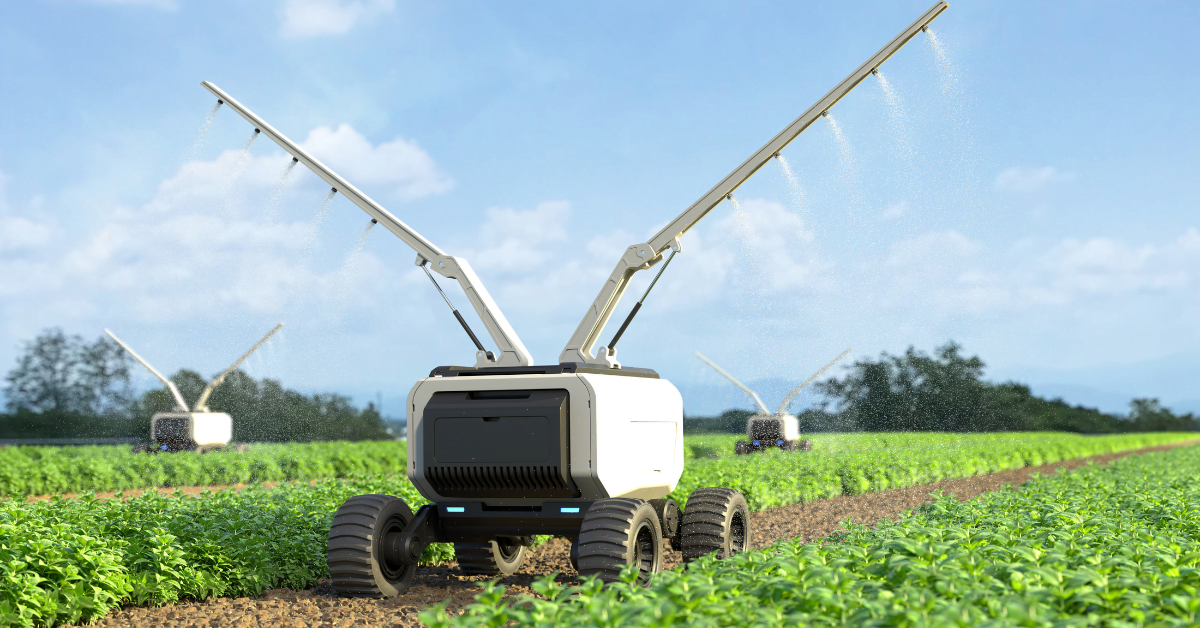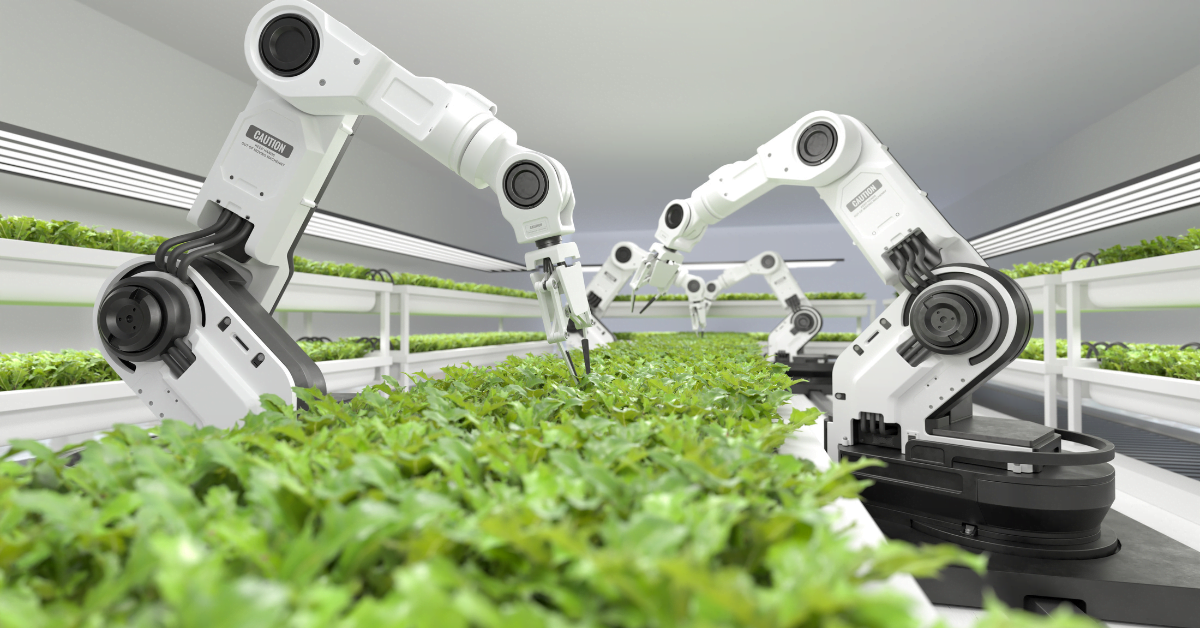A massive change is about to occur in the agricultural sector, which is the backbone of many economies worldwide. It is currently adopting cutting-edge technology to deal with rising food needs, maximize resource efficiency, and solve labor shortages. Human toil and physical labor dominated this field previously. Enhancing Agriculture Through Robotics-Among these advancements, robotics stands out as a game-changer, radically changing how we cultivate, tend, and harvest crops. Let’s examine the many kinds of agricultural robots, their numerous uses and advantages, and the challenges that come with their emergence as we delve into the field of agricultural robotics.
Robotics’ Emergence in Agriculture
Automation, machine learning, and artificial intelligence (AI) advancements have led to a gradual progression that has resulted in the integration of robotics into agriculture. Robots began to fill positions previously considered unattainable for machines as technology advanced. Almost every stage of farming now involves robotics, from soil analysis and seed planting to harvesting and processing.

An Historical Angle
Agriculture became mechanized with the introduction of the plow and tractor, which transformed production and efficiency. However, these devices still required human operators. Robotics represents the next phase of this evolution, enabling robots to function autonomously or with minimal human assistance. The need for accuracy, reliability, and flawless completion of routine tasks drives this shift.
Advancements in technology-Enhancing Agriculture Through Robotics
Several key technological advancements are driving the development of robots in agriculture:
Robots can now learn from data, make intelligent decisions, and steadily improve their work performance thanks to artificial intelligence (AI) and machine learning technology.
IoT and sensors: Robots use real-time data from Internet of Things devices and sensors to enhance weather, soil quality, and crop health.
GPS and Navigation Systems: Robots can traverse fields with previously unheard-of precision thanks to advanced GPS systems, which enables precise execution of tasks like planting and spraying.
Mechanics: Progress made in materials science and engineering has resulted in the development of robots that are safe to do delicate tasks like gathering fruit.
Agricultural Robot Varieties
Known under many different names, “agribots,” or agricultural robots, are designed to perform distinct jobs. The following are a few of the most common types:
Self-governing Tractors
One of the first and most popular types of agribots, autonomous tractors have sensors, AI, and GPS. To ensure accurate resource use and save waste, these tractors autonomously traverse fields, plant seeds, and apply fertilizers or insecticides.
Robots for Harvesting
Harvesting requires a lot of work, especially for fragile crops like fruits and vegetables. Vegetable harvesting robots mimic human hands through their gentle touch. They use sophisticated vision systems to recognize ripe produce and handle it gently to prevent harm.
Robots for Seeding and Planting
These robots automate the planting procedure, ensuring precise seeding of the right amount and spacing. Equipped with sensors that evaluate soil conditions in real time, they optimize germination rates and promote consistent crop growth.
Robots for Weeding and Pest Control
Robots that detect and remove weeds using machine learning and computer vision can discriminate between crops and weeds, allowing for targeted removal without damaging crops. In a similar vein, pest control robots use precision spraying to detect and eradicate pests while using less pesticide.

Unmanned Aerial Vehicles in Agriculture
Drones, albeit not terrestrial, are indispensable to contemporary agriculture. Drones with cameras and sensors quickly scan wide fields and provide comprehensive information on crop health, moisture content, and insect infestations. Farmers may use this information to make well-informed decisions regarding pest management, fertilization, and irrigation.
Automated milking machines
Robotic milking systems are becoming more and more common in the dairy business. By enabling on-demand milking, these robots enhance animal comfort and increase milk output from cows. They also gather information on the health of individual cows, which facilitates improved herd management.
The benefits of robotic agriculture
Robots have several applications in agriculture, and they offer significant advantages.
Enhanced Productivity and Efficiency-Enhancing Agriculture Through Robotics
In agriculture, robots greatly increase production and efficiency. Their ability to labor nonstop, complete tasks quicker than people, and run around the clock results in increased crop yields and more effective use of resources.
Accurate Farming
Precision agriculture relies on monitoring, measuring, and adapting to crop variability; robots are essential to this farming method. For instance, precision planting ensures the correct depth and spacing of seeds, thereby improving crop yield.
Labor Savings
Labor shortages are a common issue in agriculture, particularly during busy seasons. Robots help to mitigate this problem by performing labor-intensive, repetitive jobs, decreasing the need for seasonal labor and labor expenditures.
Advantages for the Environment
Robotic agricultural laborers advocate for environmentally friendly farming methods. They administer them more accurately by using fewer pesticides and fertilizers overall, minimizing their impact on the environment. While weeding robots eliminate the need for chemical pesticides, they also support organic farming.
Enhanced crop observation
Robots equipped with sensors and imaging technology provide real-time data on crop health. This enables farmers to identify problems early and take swift remedial action, minimizing crop losses and increasing farm output.
Food safety has improved.
Post-harvest robots contribute to food safety by automating processes like sorting and packing, spotting and eliminating tainted or damaged products, and lowering the possibility of foodborne infections, post-harvest robots contribute to the safety of food.

Obstacles and Restrictions-Enhancing Agriculture Through Robotics
Despite all of the benefits, implementing robotics in agriculture has drawbacks.
High starting prices
Agricultural robots can be prohibitively expensive to buy and maintain, particularly for small-scale farmers. The initial expenses are a major deterrent, even though the long-term advantages can make the investment worthwhile.
Complexity of Technology
Robotic farm operators need to be technically skilled. Farmers could have to employ specialists or go through training, which would make integrating into current systems difficult and time-consuming.
reliance on information
Robots that work in agriculture mostly rely on data to make decisions. Incomplete or inaccurate data might result in less than ideal performance. There are also difficulties with data gathering, storage, and analysis, especially when it comes to security and privacy.
Restricted Flexibility
While robots are excellent at some activities, they might not be as adaptable as needed for a variety of farming operations. For example, a robot designed to harvest one crop may not be suitable for another, necessitating the use of multiple robots for different jobs.
Opposition to Adoption
New technologies often face hostility in established sectors like agriculture. Farmers may be hesitant to switch to robotic systems in favor of accustomed practices.
Infrastructure Needs
Agricultural robots frequently need auxiliary infrastructure, such as well-kept fields and high-speed internet, for processing data in real time. Inadequate infrastructure can make it more difficult to implement these technologies effectively.
Social and ethical aspects to consider
The increasing use of robotics in agriculture raises ethical and social concerns about potential job displacement and the concentration of cutting-edge technology among major agribusinesses, which exacerbate inequality.
The future of agricultural robotics
Agricultural robots have a bright future ahead of them, thanks to ongoing innovation and falling costs that make these technologies more widely available.
Cobots, or collaborative robots
Cobots, or collaborative robots, are becoming more common in agriculture. By supporting human laborers and fusing human adaptability with robotic accuracy, they increase production.
Robots Driven by AI
Agricultural robots will become increasingly sophisticated as artificial intelligence (AI) develops. They will be able to learn from fresh data, adjust to changing conditions, and gradually maximize performance. This could potentially lead to fully automated farms, where robots manage every aspect of farming.
Robotic Swarm
Swarm robotics involves a group of smaller robots cooperating with one another. In the field of agriculture, robot swarms might swiftly and effectively cover wide regions while doing large-scale operations like planting or harvesting.
Robotics and Vertical Agriculture
Robotics also plays a major role in vertical farming, which is the process of producing crops at stacked levels, especially in urban contexts. In vertical farms, robots handle everything from planting to harvesting, making the most of available space and resources and lowering the need for pesticides and herbicides.
Organic and Sustainable Agriculture
Robotics can greatly aid organic and sustainable agricultural methods. Precision agriculture reduces the need for chemical inputs, and the use of robots for weeding eliminates the need for pesticides, making large-scale organic farming more feasible.
In summary
Robots herald an era of greater efficiency, accuracy, and sustainability in farming. However, the advantages still outweigh the disadvantages. Agricultural robotics will advance technologically, becoming more sophisticated, accessible, and economical. This will turn agriculture into a high-tech sector that is prepared to take on the problems of the twenty-first century. Embracing robots is a way for farmers to embrace the future of farming, not merely a way to stay competitive. The agriculture sector can ensure resource efficiency, reduce environmental impact, and satisfy global food demands by utilizing robotics. Without a doubt, robotics will have a significant impact on how modern agriculture develops in the future.
FAQ:
What is the role of robotics in modern agriculture?
Robotics in modern agriculture plays a crucial role in automating tasks such as planting, harvesting, and crop monitoring. By utilizing advanced sensors and AI, robots can perform these tasks with precision, reducing labor costs and increasing efficiency. This technology enables farmers to optimize crop yields and manage resources more effectively.
How do agricultural robots improve crop management?
Agricultural robots improve crop management by providing real-time data and performing tasks with high accuracy. They can monitor plant health, detect pests, and apply fertilizers or pesticides precisely where needed. This targeted approach minimizes waste, reduces environmental impact, and enhances overall crop quality and yield
What are the benefits of using robotics in agriculture?
Enhanced crop quality, lower labor expenses, and more production are some of the advantages of robots in agriculture. Robots can work constantly and are more efficient than humans at repetitive activities. They also assist farmers in making data-driven decisions, which improves resource management and increases agricultural yields-Enhancing Agriculture Through Robotics
Are there any challenges in implementing robotics in agriculture?
Yes, there are challenges in implementing robotics in agriculture, including high initial costs, technical complexities, and the need for skilled operators. In addition, careful planning and adaptation are needed to integrate robotics with current agricultural processes. But as technology develops and is more accessible, these obstacles are progressively being addressed
What is the future of robotics in agriculture?
Robotics in agriculture appears to have a bright future because to advances in AI, machine learning, and sensor technologies. More autonomous robots that can carry out difficult jobs like real-time crop analysis and selective harvesting are something we should anticipate. These innovations will raise the profitability, sustainability, and efficiency of agriculture even more



